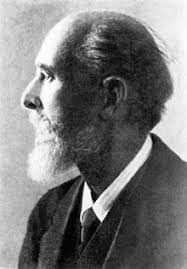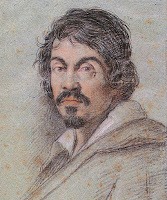The Imperial Easter Eggs
 |
| Peter Carl Faberge` |
It’s almost one a.m. on a chilly night before Easter. The year is 1885. In his
workshop on Bolshya Morskaya a
fashionable street in St. Petersburg, Peter Carl Faberge` is giving the final
finishing touches to a beautiful golden Easter egg. This is no ordinary Easter
egg and Faberge` is no ordinary jeweler. He's recently been titled ‘Master
Jeweler’ and been awarded a gold medal by Tsar Alexander III. Faberge` had been
commissioned by him to make an Easter egg for his wife Tsarina Maria
Feodorovna. The Tsar wanted to present the
egg to his wife on Easter and also celebrate their twentieth wedding anniversary
 |
| The Hen Egg |
From then on it became a royal tradition to have Faberge` create this small, mesmerizing, jeweled work of art every Easter. With each passing year he outdid himself, his workmanship
and designs becoming more intricate and elaborate.
Once Faberge`
approved of the design, the work was executed by a team of talented craftsmen
under his close supervision. Extreme emphasis was laid on fine craftsmanship, creativity, beauty and very high standards were set for everyone who worked for him.
In November 1894, the Tsar passed away and his son Nicholas
II became the new Tsar of Russia. The newly appointed king kept up the tradition of presenting a
Faberge` egg every Easter to the Empress, but now instead of one he commissioned Faberge' to create two eggs. One was made for his wife Alexandra Fyodorovna and one for his mother
the Dowager Empress. All together fifty imperial eggs were created; twenty were
given to the Empress and thirty to the Dowager Empress.
 |
| The Lilies of the Valley Egg |
For the Easter of 1898 Faberge` created the ‘Lilies of the
Valley’ egg. Nicholas II presented this egg to his wife. The egg is covered in
pearls and topped with rose-pink enamel. It’s supported by cabriolet legs of
green gold leaves; with rose cut diamond dew-drops. The gold stemmed lilies
have green enameled leaves and flowers made of gold, set with rubies, pearls
and diamonds.
The surprise reveals itself by twisting a gold mounted
pearl button. When fully raised, three portraits are visible under the imperial
crown. Tsar Nicholas II and his two oldest daughters, the Grand Duchess Olga
and the Grand Duchess Tatiana. The
portraits are framed in rose diamonds and backed with gold panels, engraved
with the presentation year-1898. Today this egg is housed in the Faberge`
museum in St. Petersburg.
Faberge` became extremely wealthy and famous in
imperial Russia. In 1900, he was awarded with a gold medal at the World’s Fair
in Paris, France honored him with one of the most prestigious awards, appointing
him a Knight of the Legion of Honor.
 |
| The Tsarevich Egg |
In 1912, the Tsar presented his wife with the Tsarevich egg.
Unknown to all except the royal family at that time, Alexi was expected to die
of hemophilia and was so close to death at one point that the Russian Imperial
court had already drawn up his death certificate. When Alexi survived,
Faberge`, who knew about his health created the egg for his mother as a tribute
to the miracle of his survival. The egg is 15 cm in height; the outer shell is
made from Lapis Lazuli with architectural style gold cage work in a design of
leafy scrolls. The gold motifs cover each joint, making the egg look like it
was carved from a single block of Lapis.
The gold work includes two imperial
double headed eagles, as well as cupids, canopies, floral scrolls, flower
baskets and garlands. Two large diamonds, one on top and one at the bottom are
encrusted into the eggs surface showing the initials of the Tsarina, the year
1912 and the imperial crown. Inside the egg the surprise is a Russian double
headed imperial eagle with a miniature portrait of Tsarevich Alexi set in
platinum and encrusted with diamonds. This intricate frame sits on a base of
Lapis Lazuli and can be completely removed from the egg.
 |
| T he Winter Egg |
In 1913, Faberge` created the winter egg. The Tsar presented
this 10.2 cm high beauty to his mother. The exterior of the egg resembles frost
and ice crystals formed on clear grass. It’s studded with 1,660 diamonds and is
made from quartz, platinum and orthoclase. The surprise is a miniature basket
of flowers, announcing the coming of spring. The basket is studded with 1,378
diamonds and is made from platinum and gold. The flowers are made of white
quartz and the leaves are made of demantoid. The flowers lie in moss made from
gold. This egg was sold at an auction at Christie’s in New York in 2002 for USD
9.6 million to the former Emir of Qatar.
In 1917, Faberge` keeping to the tradition worked on two
eggs, but before they could be presented, the Bolshevik’s February Revolution
broke out and Nicholas II was forced to abdicate the throne. His entire family
was executed the following year. The eggs and many other treasures were
confiscated by the interim government. The two final eggs were never delivered
nor paid for. In 1918 the ‘House of Faberge` was nationalized by the
Bolsheviks.
After the nationalization Carl Faberge` left St. Petersburg
on the last diplomatic train for Riga, finally the family settled in
Switzerland. He never recovered from the shock of the revolution and died on
September 24th 1920 of what many believed to be a broken heart.
Today, there are ten eggs at the Kremlin Armory, nine at
the Faberge` museum in St. Petersburg, Five at the Virginia Museum of Fine Arts
and three each at the Royal Collection in London and the Metropolitan Museum of
Art in New York. Two more are on display in Lausanne, Switzerland, two at
Hillwood Estate in Washington, D.C and two at the Walters Art Museum in
Baltimore. There’s a single egg in the collection of the Cleveland Museum of
Art, one at the Faberge` Museum in Baden- Baden, Germany. One is also owned by
the former Emir of Qatar, Hamad bin Khalifa Al Thani.
The fate of eight imperial eggs remains a mystery. Two eggs
are believed to be in the west, these are the 1889 Necessaire Egg, last spotted
in London in 1949 and the 1888 Cherub with Chariot Egg, which seems to have been exhibited at Lord &
Taylor department store in New York in 1934.
In 1924 Faberge's sons opened a store called Faberge 'and Cie in
Paris. Today the company
is headquartered in Mayfair in London.
Art History Resources,
artsy.net
CNN style.com


Comments
Post a Comment